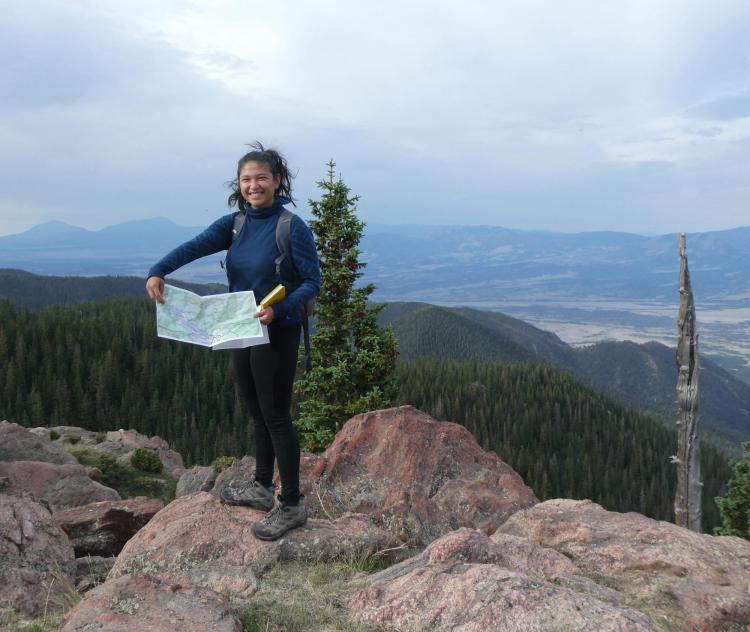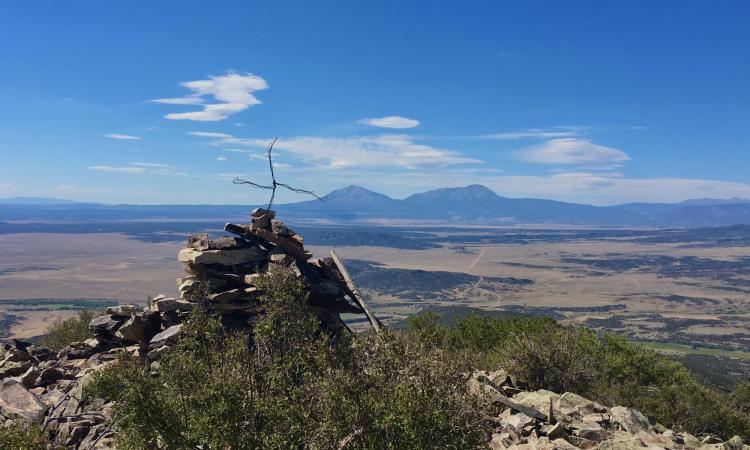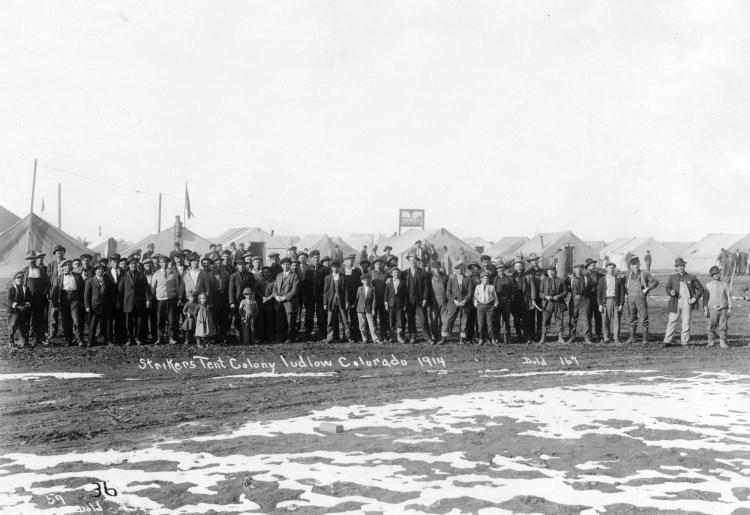Geologists explore the hidden history of Colorado’s Spanish Peaks
If you’ve driven the mostly flat stretch of I-25 in Colorado from Pueblo to Trinidad, you’ve seen them: the Spanish Peaks, twin mountains that soar into the sky out of nowhere, reaching altitudes of 13,628 and 12,701 feet above sea level.
In a new study, geologists from CU Boulder have laid out a timeline for the emergence of these majestic but isolated mountains. The team’s findings could bring scientists closer to answering one of the most enduring puzzles in Colorado geology: What made Denver, the Mile High City, a mile high?
“For geologists, the big question is: Why are Colorado’s High Plains so high?” said Sabrina Kainz, who led the research as an undergraduate student studying geology at CU Boulder.
The group published its findings March 1 in the scientific journal Lithosphere.
Colorado’s craggy, snow-capped Rocky Mountains attract tourists and more. But for researchers like Kainz and CU Boulder geologist Lon Abbott, the High Plains that extend over much of eastern Colorado—the territory of tumbleweeds and prairie dogs—may be even more interesting.

Sabrina Kainz on an expedition to collect rock samples. (Credit: Lon Abbott)

View from Colorado's Wet Mountains looking south toward the Spanish Peaks in the distance. (Credit: Sabrina Kainz)

Striking coal miners gather in front of the Ludlow tent site in 1914. (Credit: Western History/Genealogy Department, Denver Public Library)
Abbott explained that the world’s highest places tend to be that way because of squishing and squeezing from tectonic plates—giant pieces of Earth’s crust that slam together, crumpling up land masses and raising entire mountain ranges. But Colorado’s High Plains, which are dominated by sedimentary rocks, aren’t crumpled at all. They’re one tall, flat stack of geological pancakes.
“The Colorado High Plains are anomalous, really, in the entire world,” said Abbott, co-author of the study and teaching professor in the Department of Geological Sciences. “They’re not formed the way that mountains are typically formed.”
To get nearer to solving the mystery of the plains, the researchers collected and analyzed rocks from the Spanish Peaks east to Two Buttes, a geologic formation near the Kansas border.
They found that the rocks forming the Spanish Peaks injected into the crust below Colorado as magma around 24 million years ago, but remained miles underground until about 17 million years ago. What happened to bring them to the surface remains a mystery.
“We can answer when the plains around the Spanish Peaks got so high,” Kainz said. “The ‘why’ of the matter is a little more complicated.”
Colorado landmark
The Spanish Peaks have long been an important monument for generations of people who have called southern Colorado home.
The indigenous Comanche people referred to these formations as “Wahatoya,” which means “Double Mountain.” In the early 1800s, travelers following the Santa Fe Trail, which joined Missouri to what is now the southwestern U.S., formerly the northern reaches of New Spain and then Mexico, used the peaks as a landmark.
“They would spend weeks and weeks traveling in their wagons on the plains,” said Abbott, whose book “Geology Underfoot Along Colorado’s Front Range” is a primer for the state’s rockhounds. “Then, all of a sudden, they'd see those mountains, and they knew they were getting close.”
In 1913, hundreds of coal miners striking against the Colorado Fuel and Iron Company set up a tent camp not far from the mountains—a prelude to the Ludlow Massacre of 1914, which remains among the nation’s deadliest labor disputes.
The peaks have always been a bit mysterious. They are as tall as many of the Rocky Mountain summits to the west, but the Spanish Peaks formed at a different time and from completely different rocks.
For Kainz, now a doctoral student at the University of Washington in Seattle, getting to study those features as an undergrad was a dream come true. She began the project at the height of the COVID pandemic in 2020, and spent hours crammed into cars with dozens of rock samples.
The team included Rebecca Flowers, professor of geological sciences; undergraduate geology student Skye Fernandez; James Metcalf, manager of the Thermochronology Research and Instrumentation Laboratory (TRaIL); and Aidan Olsson, then a student at Fairview High School in Boulder now studying biology at CU Boulder.
The project hinged on an approach called thermochronology. Kainz noted that small chemical changes in the crystals within many rocks can give geologists clues about how hot or cold those samples were millions of years ago. Rocks buried deep below the Earth tend to be hotter than those closer to the surface.
More than a mile high
According to the team’s results, the Spanish Peaks first formed when magma welled up from deep within Earth’s crust but didn’t quite break through to the surface.
Then, something happened. In a very short span of time, geologically-speaking, huge tracts of land in southeastern Colorado vanished. Between roughly 18 and 14 million years ago, more than a mile of sedimentary rocks around the Spanish Peaks eroded away, then were swept into the Arkansas River.
The researchers suspect that as-of-yet-unidentified geologic forces were pushing up southeastern Colorado from below—exposing previously underground rocks to rain and flowing water.
Abbott and his colleagues are now exploring how this disturbance may have fit into the broader evolution of Colorado’s plains. Their preliminary data, for example, suggests that the flat lands around what is now Denver may not have experienced similar upheaval at the same time.
But the study makes one thing clear: Colorado’s High Plains have long been something to behold.
“As high as the High Plains are today, they used to be a lot higher,” Kainz said. “They were as high as the Rocky Mountains are today.”


